Shoes were invented to protect the human feet. But due to poor air circulation and prolonged usage, people may develop sweaty feet.
As a result, shoes eventually harbor fungus and bacteria which can cause feet and shoe odor.
Aside from redesigning shoes to promote air circulation inside them, companies have developed specialized insoles that could solve these common problems.
Their sweat and odor-reducing capability usually comes from the additional materials used.
Types of Shoe Insoles That Reduce Sweaty Feet and Foot Odor
Here are the different types of shoe inserts and sandal insoles which have the capacity to reduce feet sweating and odor buildup:
Activated charcoal or carbon insoles
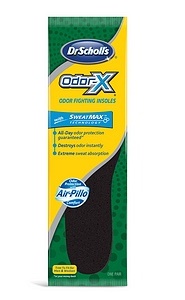
One of the most popular and highly marketed types is the insole containing activated charcoal particles. If there’s a charcoal sock, there’s also a charcoal insole.
Charcoal has been an ancient deodorizer and filtering material. Activated charcoal is the improved version. The charcoal is temperature treated to expand it and create millions of micro-pockets.
Activated charcoal works like a sponge which can absorb water particles. But aside from absorbing moisture, this special charcoal can absorb gas particles especially the odor-causing components.
Bamboo is an ideal material used in manufacturing activated carbon. Because aside from the finer plant fibers, there are also added benefits claimed like the improvement of blood circulation and metabolism.
Aside from charcoal, some of these insoles also use baking soda still for moisture and odor absorption.
A popular, well-reviewed brand that uses activated charcoal and baking soda are Dr. Scholl’s Odor-X Odor Fighting Insoles. Their SweatMAX® technology layer neutralizes and protects against unpleasant odors.
Ultra absorbent insoles
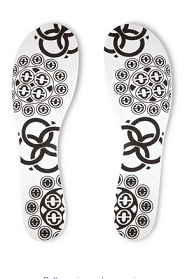
Feet odor is mainly caused by excessive sweating so it’s important to eliminate moisture instantly. There are ultra absorbent insoles which can take care of this task.
The surfaces of these insoles are created by felting tiny cotton fibers similar to the surface of a towel except that it’s done in a micro scale. And similar to towels, you could rely on these insoles to absorb the sweat produced by the feet.
Non-slip absorbent insoles
One of the more well known brands making absorbent insoles that prevent slippery discomfort is Summer Soles. They make Ultra-Absorbent style soles for normal shoes but also for women’s sandals, open toes, slingbacks, pumps and other shoes. Their open shoe liners are made out of soft, non-scratchy Australian wool.
Cedar wood insoles
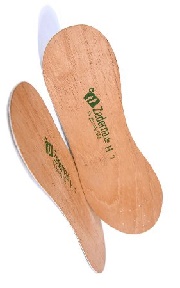
Have you ever imagined using a wooden insole? You should if you want to get rid of sweat and odor. (they are my favorites together with a type of charcoal insoles) Just like charcoal, cedar has long been used as a household deodorizer.
Cedar wood has natural antifungal and antibacterial properties so it’s perfect in inhibiting these odor-causing microorganisms.
The cedar wood used in insoles is extremely thin and flexible making it still comfortable to wear and use.
They are designed to soften and conform to the shoe sole and your feet upon first wear.
Charcoal and other odor eaters have limited absorbtion ability of odors. Cedar insoles don’t. The best reviewed brand is Zederna’s Original Cedarsole Inserts against Foot Odor and Sweaty Feet.
Other well known brands are Briskstep and Nawemo.
Products that utilize cedar wood’s smelly shoes reducing properties are cedar wood shoe trees.
Biocide or treated wool insoles
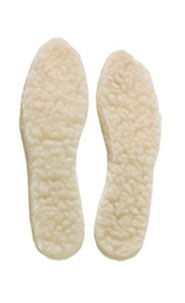
These are insoles which are chemically treated to prevent the growth or kill bacteria and fungus which may grow in your insoles or shoes.
The wool material adds up to the absorbent nature of these insoles.
Wool fibers grab each other, thus leaving air spaces that allow air and sweat to pass. This is why wool is used in anti-sweat insoles.
The sweat is guided from your feet into the crevices between the fibres after which it is absorbed in the insole. In order to increase absorbtion compressed fibers are used in firm but thin fabric strips.
Ionized insoles
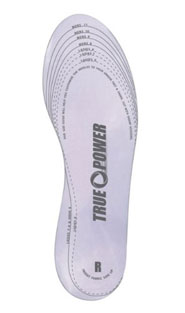
Ionization technology is currently gaining popularity. Perhaps, you have heard about ionized water, filters, air conditioners, refrigerators, etc. This technology is now applied to insoles too.
In laymen’s term, ionization simply means changing the electric charge of an item’s particles or components. Ionization is usually done to clean or make an item behave like a magnet; attract desirable materials, chemicals, etc, or on the other hand, repel and inhibit others.
In the case of ionized insoles, a silver insole lining is ionized to inhibit the growth and proliferation of odor-causing bacteria.
Aromatherapy insoles
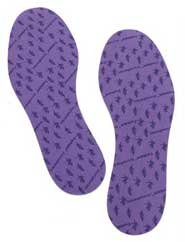
Aroma therapy insoles are simply the all-natural counterparts of biocide insoles.
Instead of chemicals, these insoles are treated or filled with natural deodorizing oils like lavender and tea tree. Tea tree oil is known to have potent antibacterial properties which makes the concept promising.
Personally, I’m not a big fan of using these insoles for smell reduction.
If you do, see if you can get lemon juice essential oil soles because lemon oil is known to help cut nasty odors.
Sockless insoles
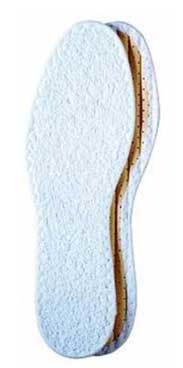
Insoles for when you are going sockless have to be really effective since bare feet in shoes sweat a lot.
Shoe inserts specifically made for this purpose do exist. Pedag 196 Washable Summer Pure Cotton Terry Barefoot Insoles for example.
Remember, going sockless in shoes is generally not recommended because it will worsen perspiration and foot odor significantly. So if you have to, the Pedag 196 inserts are highly recommended.
It’s probably a good thing these are washable. (Haven’t tried them myself)
The best shoe insoles for sweaty feet
As we have seen sweat and foot odor reducing insoles for shoes come in different types.
If you ask me, aromatherapy soles, and ionized soles sound interesting but when it comes to effectiveness good old insoles based on charcoal to reduce odor, or soles made out of cedar wood together with ultra-absorbent technology are hard to beat. If you take a look at reviews you will conclude the same.
That’s why I recommend Dr. Scholls and Cedar soles. Personally I have had best results with those.
Something about cotton insoles. Cotton insoles are not recommended by podiatrists. Once they are wet it takes long to dry again creating a fertile ground for bacteria to live in. Apart from that they are known to cause skin ailments.
One more thing, while you’re at it, do yourself a favor and order some On Your Toes Foot Bactericide Powder too. Together with some quality insoles you are almost assured of fresher, dryer feet.